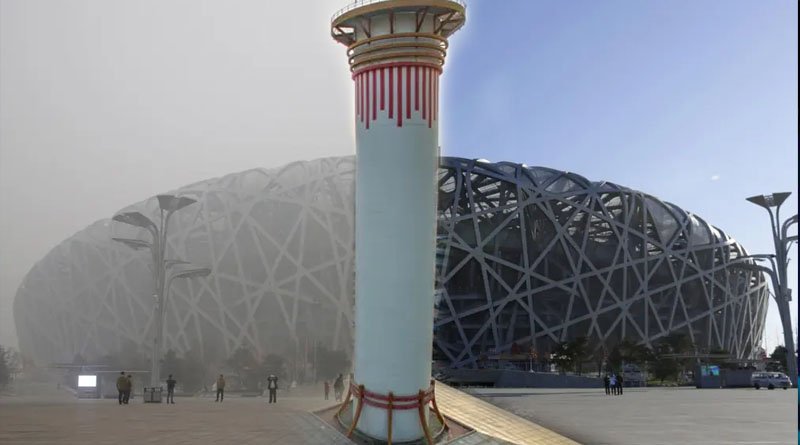According to a CM secretariat official, Chinese smog towers appear to be an antidote to air pollution in the face of poor air quality in Punjab.

To combat hazardous smog and air pollution across Punjab, home to more than 100 million people, the Punjab government springs into action in 2023 by using Chinese anti-smog technology to install smog towers in Lahore and other parts of the province.
Gwadar Pro reported that progress had been made following a successful meeting between the Punjab Chief Minister and Chinese Consul General in Lahore, Zhao Shiren, on Monday.
According to Chinese Consul General Lahore Zhao Shiren, the Chinese Consulate in Lahore has provided the Chief Minister Office Task Force Smog with comprehensive documents regarding smog-eating towers built in China, recognising that good air quality is beneficial to the people of Lahore.
“We were able to collect all of the necessary data and information by connecting with relevant authorities in China,” a Chinese Consulate official in Lahore said. “If the CM office requires additional assistance, we will gladly provide it,” he added.
According to a CM secretariat official, Chinese smog towers appear to be an antidote to air pollution in the face of poor air quality in Punjab.
“We noted that smog has become a global problem, and the government wants to use Chinese anti-smog technology to control it in Punjab, especially in Lahore. Air purification towers in Lahore and other cities will benefit from Chinese technology. “Air-purifying towers will be built near border areas and industrial zones,” he added.
According to the information, China’s Institute of Earth Environment has built the world’s largest air purifier in the northern city of Xi’an.
“The smog-sucking tower stands over 100 metres tall and is designed to improve air quality in the city, where standards regularly fall short of World Health Organization expectations,” he added.
To assess the tower’s impact, he stated that pollution monitoring stations in the surrounding area discovered that levels of PM2.5—the fine particles in smog considered most harmful—fell 15% during periods of heavy pollution, compared to the average.
According to environmentalist Naseem Shahid, because the Punjab government has declared an environmental emergency, smog-free towers are desperately needed in Punjab.
Around the base of the tower is a network of greenhouses covering an area roughly half the size of a soccer field. It draws in polluted air and heats it with solar energy.
The heated air then rises through the tower and is cleaned by multiple layers of filters.
Since its inception, the Xi’an tower has produced more than 10 million cubic metres (353 million cubic feet) of clean air per day.